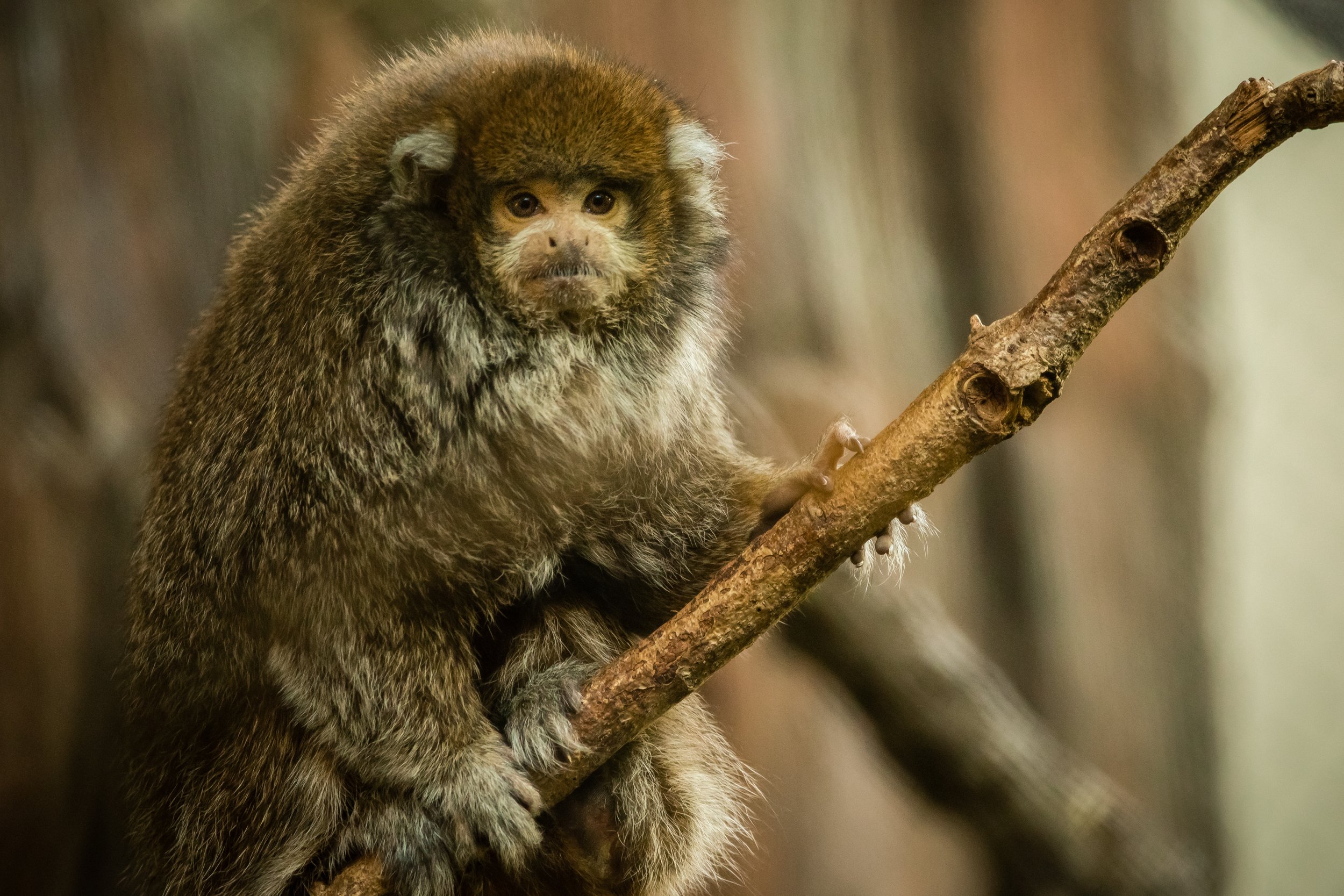Unexpected Rainforest Roommates
Stepping onto the Tropics Trail at the Minnesota Zoo, guests find themselves walking among lush landscapes and diverse ecosystems. From a rainbow of bird species to lemurs and reptiles, there’s something new to discover around every corner. Nestled along the Trail you’ll find the shared habitat of the Bolivian gray titi monkey and the red-rumped agouti.
Originating in South America, both species are native to the central and south American rainforest. While these species don’t cross paths in the wild, their cohabitation presents guests with a unique opportunity to learn more about how the distinct layers of the rainforest, the most diverse biome on Earth, support different kinds of life.
In the wild, Bolivian titi monkeys can be found high in the treetops above, living together in family units. During the day, they spend their time swinging from limb to limb in search of food and sleeping in the branches of vine-encrusted trees. They rarely, if ever, descend to the forest floor.
Meanwhile, the red-rumped agouti, a mid-sized rodent, roams the understory of the rainforest, living in tree roots, caverns, and other small nooks. They use the dense canopy above as protective cover and spend their days foraging for fallen fruit, nuts, and leaves that are dropped by tree-top dwelling species above.
Though they live very different lives, this distinct separation of habitat and behavior allows these two species to thrive together. It also helps to tell the story of the rainforest’s complexity and how each layer of the ecosystem is intricately woven together. Many habitats on the Tropics Trail feature multiple species that help guests understand these systems and form personal connections to the vibrant array of life that calls the rainforest home.
Thanks to the continued support of donors to the Minnesota Zoo Foundation, habitats like these continue to offer countless people of all ages the unique chance to learn about the delicate balance of rainforests, providing a deeper understanding of the plants and animals that live there and forming lasting connections that help save wildlife.

